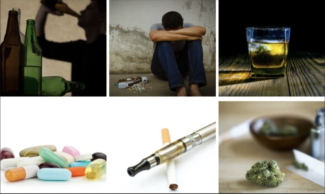Search
Selected Lifestyle Factors of Candidate Sperm Donors and Their Effect on Spermiogram Values in the Moravian Part of the Czech Republic. Study Protocol
INTRODUCTION:
Male infertility affects nearly 14% of men in Europe, and approximately 44% of them are unaware of the cause of their infertility. Thanks to the plentitude of research, we can now clearly define the risk factors that...
Rehabilitation of Executive Functions in Users of Addictive Substances. Study Protocol
BACKGROUND:
Substance use increases the risk of damage to executive and cognitive functions. Manifested by a range of clinical symptoms, such impairments may affect people’s coping with everyday activities and their abilities to establish...
Review of Competency-Based Models and Quality Standards in Training and Education in the Addiction Field: Study Protocol
BACKGROUND:
There is a growing trend of development and improvement of education and training in the field of addictions, hand in hand with the increase and changes of substance use-related issues. To ensure a high level of education...
The public mental health revolution must privilege lived experience voices and create alliances with affected communities
In a new editorial in World Psychiatry, Prof. Helen L. Fisher discusses how public health must recognise the influence of social circumstances and experiences and calls for lived experience to be at the centre of this revolution.
Fisher...
Stigmatizing imagery for substance use disorders: a qualitative exploration
La pericia psicológica y su valoración en la imposición de sanciones penales en casos con consumo de sustancias psicoactivas
English
Around the world, using drugs is connected to both the legal system and the health system. Studies suggest a link between drug use and crime, but they say it's not a direct cause. In many countries, the legal system is overwhelmed...
Consideration of vaping products as an alternative to adult smoking: a narrative review
Tobacco harm reduction is a public health strategy aimed at lessening the health impact of cigarette smoking. This approach involves using non-combustible alternatives to cigarettes, such as electronic cigarettes (e-cigarettes), which...
Challenges in substance use treatment as perceived by professionals and Arabic-speaking refugees in Germany
Background
This study explores substance use (SU) and substance use disorders (SUDs) among Arabic-speaking refugees in Germany. The research investigates the challenges and experiences related to SU treatment from the perspectives of both...
Build your Expertise: Five Benefits of Universal Treatment Curriculum Self-Led Courses
Male Patient Drop-Out from Addiction Inpatient Treatment in the Czech Republic: A Study Protocol
BACKGROUND: The dropout rate from the treatment of patients with substance use disorders (SUD) negatively affects overall treatment outcomes. Little is known about the specific role of various psychiatric and psychosocial factors in the...
How does the Excise Tax Affect Secondhand Smokers and the Health Consequences of such Addiction?
INTRODUCTION: Smoking and tobacco products are long-term tolerated and socially accepted in many societies. In some socioeconomic groups and regions, this is considered standard practice. One of the ways to limit not only direct but also...
Exploring electronic cigarette portrayals: a content and thematic analysis of African online news coverage
Background: Electronic cigarette usage has seen a significant increase globally in recent years, with many countries reporting a rise in users. However, the way African news portrays this phenomenon remains unclear.
Methods: This study...
Gender differences in physical morbidity in opioid agonist treatment patients: population-based cohort studies from the Czech Republic and Norway
Background: Physical health problems are common in people receiving opioid agonist treatment (OAT). A study was conducted on these health issues in OAT patients in the Czech Republic and Norway from 2010 to 2019, with a focus on gender...
Learnings from a prison-based drug treatment program on planning for release
Substance use disorder is common among people in prison worldwide.
This report explores the experiences of males in prison who completed and those who did not complete a group-based drug and alcohol program, to gain insight into their...
Integrating Opioid Use Disorder Treatment Into Primary Care Settings
Abstract
Importance Medication for opioid use disorder (MOUD) (eg, buprenorphine and naltrexone) can be offered in primary care, but barriers to implementation exist.
Objective To evaluate an implementation intervention over 2 years to...
Use of Medication for Opioid Use Disorder Among Adults With Past-Year Opioid Use Disorder in the US, 2021
Discussion
Despite guidelines recommending MOUD, approximately 1 in 5 adults with past-year OUD received any MOUD. Furthermore, some groups were substantially less likely to receive MOUD, in particular Black adults, women, those unemployed...
Stigmatising imagery for substance use disorders
Stigma is a barrier to treatment for individuals with substance use issues. Although there has been research conducted exploring the impact of stigmatising language, less is known about the effects of stigmatising images.
This qualitative...
Addiction Nursing Competencies: A Comprehensive Toolkit for the Addictions Nurse
Abstract
With the increased role of nurses in caring for patients with substance addiction, there was a clear need to develop the Addiction Nursing Competencies to guide and support the nursing workforce.
A literature search revealed a...
International monitoring of capacity of treatment systems for alcohol and drug use disorders: Methodology of the Service Capacity Index for Substance Use Disorders
Abstract
Objectives
We aimed to develop a Service Capacity Index for Substance Use Disorders (SCI-SUD) that would reflect the capacity of national health systems to provide treatment for alcohol and drug use disorders, in terms of the...
Share the Knowledge: ISSUP members can post in the Knowledge Share – Sign in or become a member





